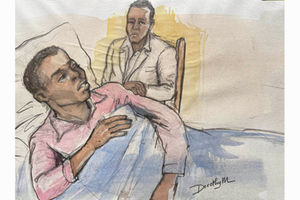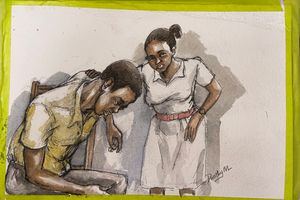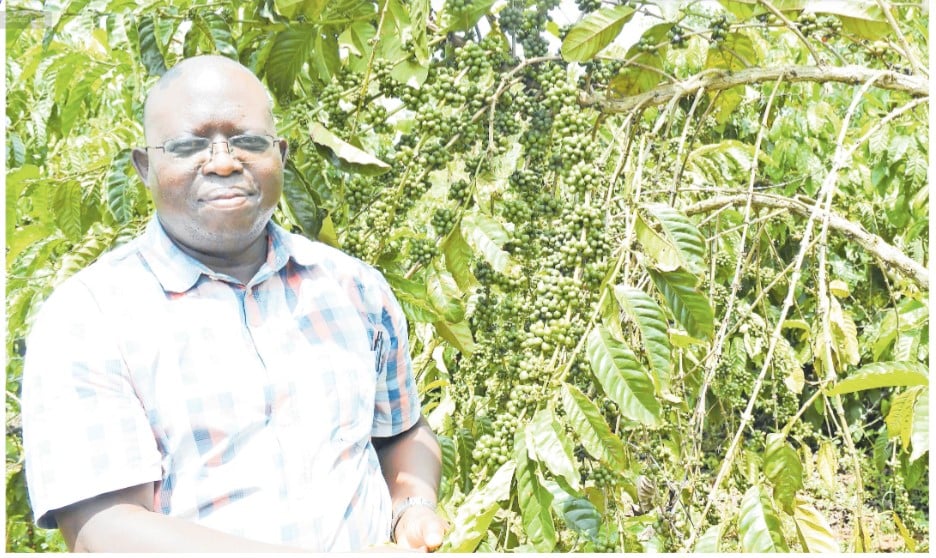
Court ignored the observations and recommendations of the pathologists.
On February 20, court reminded itself of the cardinal principles of law that in criminal cases, the burden of proof is always on the prosecution and the standard of that proof is beyond reasonable doubt.
In murder cases, an ingredient of the offence that must be proved beyond reasonable doubt is the fact of death.
And when a one Richard was charged with the offence of murder of his step brother, Isaac, a university student, prosecution had to prove beyond reasonable doubt the fact of death.
That Isaac died on May 15, 2021 was not in contention. And that he was buried two days later was also not contested. To court, one of the key ingredients of murder had therefore been proven beyond reasonable doubt.
The legal position on the legality of death (or lack thereof) is that every homicide is presumed to be unlawful, unless it is justifiable or circumstances make it to be excusable.
The term homicide is defined as the killing of a human being by another human being. Such justifiable circumstances of homicide may include self defence or when the death is authorised by law. He deceased died from a reputable private hospital. The cause of death as stated in the death certificate, was acute pancreatitis. A bother of the deceased testified that after the death of his brother, he approached one of the doctors in the hospital to find out what exactly killed his brother.
The doctor replied that Isaac had died of acute pancreatitis which meant that the pancreas was inflamed and the lungs failed as a result of this inflammation.
While in hospital, the deceased also tested positive for the Corona virus. However blood samples taken to a government facility after the death of the patient was found to be negative for the virus.
The body of the deceased was exhumed 8 weeks after he was buried and samples from the body were removed and submitted to a toxicology laboratory. The results indicated that the samples quantitatively contained a chemical, Carbofuran, which is used in agriculture to kill pests.
The chemical was found in the stomach and part of the liver and part of kidney that were submitted for analysis. This chemical has been classified as highly hazardous by the World Health Organisation. The government analyst who testified in the case was asked how long the chemical may take to kill.
He told court that this depended on many factors, including the age, health status of the person and the medical care that the person is receiving but that death could occur within 2-3 weeks. The deceased die two months after allegedly being given the poison.
The possible source of the poison Carbofuran, court was told could be from food or fluids and crops when they are either intentionally or accidentally ingested or exposed on skin or inhaled. And the evidence of the pathologists was that this chemical causes death within a very short time. Court interpreted the findings of the pathologists to mean that the cause of death of Isaac was Carbofuran.
Court, however, misdirected itself regarding the conclusion of the pathologists. The conclusion was very clear and they stated in no uncertain terms “For now we hold reservation to conclude the cause of death as due to Carbofuran poisoning and recommend;
A quantitative test to be performed to determine the actual chemical concentration level in the submitted samples and whether it was a lethal dose
The samples should be submitted for further analysis in a different laboratory for another opinion”.
The quantitative test recommended was not carried out and the samples were not submitted to a different laboratory for another opinion.
Court, however, ruled that prosecution had proved beyond reasonable doubt the existence of this very toxic substance in the body of the deceased and this was corroborated by the symptoms that were exhibited by the deceased before he died as narrated by the father to the deceased. Court, therefore, ruled that the deceased died due to poisoning which is unnatural and therefore unlawful.
To court an evaluation of the prevailing circumstances of the death would have been instructive. In the instant case, however, there were no circumstances presented to court that would make the death of the deceased either excusable or justifiable.
Court, therefore, ruled that the death of the deceased was not natural and it was neither suicidal nor accidental but a homicide, not having found any lawful reason for his poisoning.
Court, however, ignored the observations and recommendations of the pathologists and kept an ominous silence on pancreatitis, the cause of death on the death certificate. Court did not mention the symptoms of the poisoning as narrated by father to conclude that the death was caused by poisoning.
Court acknowledged that according to the evidence before it the chemical Carbofuran causes acute death. The deceased was alleged to have been given the poison on 14th March 2021 and he died two months later, on 15th May 2021. Unfortunately the lawyers for the accused person did not bring out the fact that the samples could have been contaminated or that the toxicology results could have been compromised.
The law defines malice aforethought as an intention to cause death of a person or knowledge that the act that resulted in death would probably cause the death of someone. Malice aforethought is a mental element that is difficult to prove by direct evidence.
The evidence adduced by the prosecution in this case was that the deceased died as a result of poisoning. To court any person who poisons another clearly has the knowledge that the act will cause harm or probably cause the death of the victim. Courts usually consider circumstantial evidence to infer malice aforethought.
It has been held that it is the duty of court, as far as possible, to examine all the surrounding circumstances of the case, including the actions of the accused, the conduct which proceeds and very often the conduct which follows the killing. And in particular the way the killing was carried out, the nature and the number of injuries, the nature and kind of weapon that was used and then asks itself whether it is satisfied that at the time of the killing there must have been intent to kill. If the court is satisfied that the intention exists then the accused must be convicted of murder.
To be continued
Court pronounces itself in a bizarre case of poisoning
On February 20, court reminded itself of the cardinal principles of law that in criminal cases, the burden of proof is always on the prosecution and the standard of that proof is beyond reasonable doubt.
In murder cases, an ingredient of the offence that must be proved beyond reasonable doubt is the fact of death.
And when a one Richard was charged with the offence of murder of his step brother, Isaac, a university student, prosecution had to prove beyond reasonable doubt the fact of death.
That Isaac died on May 15, 2021 was not in contention. And that he was buried two days later was also not contested. To court, one of the key ingredients of murder had therefore been proven beyond reasonable doubt.
The legal position on the legality of death (or lack thereof) is that every homicide is presumed to be unlawful, unless it is justifiable or circumstances make it to be excusable.
The term homicide is defined as the killing of a human being by another human being. Such justifiable circumstances of homicide may include self defence or when the death is authorised by law. He deceased died from a reputable private hospital. The cause of death as stated in the death certificate, was acute pancreatitis. A bother of the deceased testified that after the death of his brother, he approached one of the doctors in the hospital to find out what exactly killed his brother.
The doctor replied that Isaac had died of acute pancreatitis which meant that the pancreas was inflamed and the lungs failed as a result of this inflammation.
While in hospital, the deceased also tested positive for the Corona virus. However blood samples taken to a government facility after the death of the patient was found to be negative for the virus.
The body of the deceased was exhumed 8 weeks after he was buried and samples from the body were removed and submitted to a toxicology laboratory. The results indicated that the samples quantitatively contained a chemical, Carbofuran, which is used in agriculture to kill pests.
The chemical was found in the stomach and part of the liver and part of kidney that were submitted for analysis. This chemical has been classified as highly hazardous by the World Health Organisation. The government analyst who testified in the case was asked how long the chemical may take to kill.
He told court that this depended on many factors, including the age, health status of the person and the medical care that the person is receiving but that death could occur within 2-3 weeks. The deceased die two months after allegedly being given the poison.
The possible source of the poison Carbofuran, court was told could be from food or fluids and crops when they are either intentionally or accidentally ingested or exposed on skin or inhaled. And the evidence of the pathologists was that this chemical causes death within a very short time. Court interpreted the findings of the pathologists to mean that the cause of death of Isaac was Carbofuran.
Court, however, misdirected itself regarding the conclusion of the pathologists. The conclusion was very clear and they stated in no uncertain terms “For now we hold reservation to conclude the cause of death as due to Carbofuran poisoning and recommend;
A quantitative test to be performed to determine the actual chemical concentration level in the submitted samples and whether it was a lethal dose
The samples should be submitted for further analysis in a different laboratory for another opinion”.
The quantitative test recommended was not carried out and the samples were not submitted to a different laboratory for another opinion.
Court, however, ruled that prosecution had proved beyond reasonable doubt the existence of this very toxic substance in the body of the deceased and this was corroborated by the symptoms that were exhibited by the deceased before he died as narrated by the father to the deceased. Court, therefore, ruled that the deceased died due to poisoning which is unnatural and therefore unlawful.
To court an evaluation of the prevailing circumstances of the death would have been instructive. In the instant case, however, there were no circumstances presented to court that would make the death of the deceased either excusable or justifiable.
Court, therefore, ruled that the death of the deceased was not natural and it was neither suicidal nor accidental but a homicide, not having found any lawful reason for his poisoning.
Court, however, ignored the observations and recommendations of the pathologists and kept an ominous silence on pancreatitis, the cause of death on the death certificate. Court did not mention the symptoms of the poisoning as narrated by father to conclude that the death was caused by poisoning.
Court acknowledged that according to the evidence before it the chemical Carbofuran causes acute death. The deceased was alleged to have been given the poison on 14th March 2021 and he died two months later, on 15th May 2021. Unfortunately the lawyers for the accused person did not bring out the fact that the samples could have been contaminated or that the toxicology results could have been compromised.
The law defines malice aforethought as an intention to cause death of a person or knowledge that the act that resulted in death would probably cause the death of someone. Malice aforethought is a mental element that is difficult to prove by direct evidence.
The evidence adduced by the prosecution in this case was that the deceased died as a result of poisoning. To court any person who poisons another clearly has the knowledge that the act will cause harm or probably cause the death of the victim. Courts usually consider circumstantial evidence to infer malice aforethought.
It has been held that it is the duty of court, as far as possible, to examine all the surrounding circumstances of the case, including the actions of the accused, the conduct which proceeds and very often the conduct which follows the killing. And in particular the way the killing was carried out, the nature and the number of injuries, the nature and kind of weapon that was used and then asks itself whether it is satisfied that at the time of the killing there must have been intent to kill. If the court is satisfied that the intention exists then the accused must be convicted of murder.
To be continued








